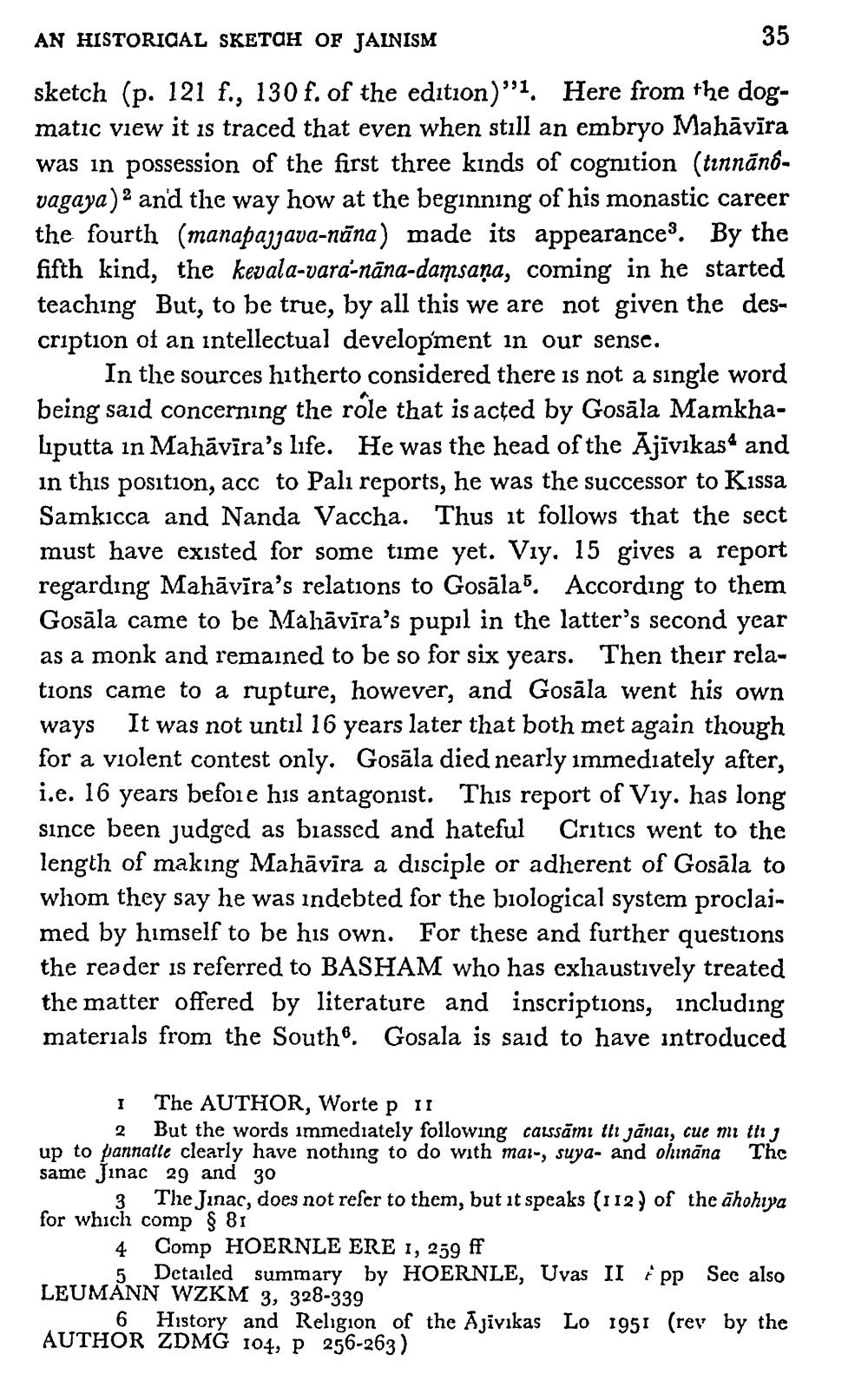________________
35
AN HISTORICAL SKETCH OF JAINISM sketch (p. 121 f., 130 f. of the edition)"1. Here from the dogmatic view it is traced that even when still an embryo Mahāvīra was in possession of the first three kinds of cognition (tinnānovagaya)2 and the way how at the beginning of his monastic career the fourth (manapajjava-nāna) made its appearances. By the fifth kind, the kevala-vara-nāna-damsana, coming in he started teaching But, to be true, by all this we are not given the description of an intellectual development in our sense.
In the sources hitherto considered there is not a single word being said concerning the role that is acted by Gosāla MamkhaLiputta in Mahāvīra's life. He was the head of the Ajīvikase and in this position, acc to Palı reports, he was the successor to Kıssa Samkicca and Nanda Vaccha. Thus it follows that the sect must have existed for some time yet. Viy, 15 gives a report regarding Mahāvīra's relations to Gosāla5. According to them Gosāla came to be Mahāvīra's pupil in the latter's second year as a monk and remained to be so for six years. Then their relations came to a rupture, however, and Gosāla went his own ways It was not until 16 years later that both met again though for a violent contest only. Gosāla died nearly immediately after, i.e. 16 years before his antagonist. This report of Viy. has long since been judged as biassed and hateful Critics went to the length of making Mahāvīra a disciple or adherent of Gosāla to whom they say he was indebted for the biological system proclaimed by himself to be his own. For these and further questions the reader is referred to BASHAM who has exhaustively treated the matter offered by literature and inscriptions, including materials from the Southe. Gosala is said to have introduced
I The AUTHOR, Worte p it
2 But the words immediately following carssamı tl jānai, cue mi ttt, up to pannalle clearly have nothing to do with mar-, suya- and olunāna The same Jinac 29 and 30
3 The Jinac, does not refer to them, but it speaks (112) of the āhohiya for which comp § 81
4 Comp HOERNLE ERE 1, 259 ff
5. Detailed summary by HOERNLE, Uvas II pp See also LEUMANN WZKM 3, 328-339
6 History and Religion of the Ajivikas Lo 1951 (rev by the AUTHOR ZDMG 104, p 256-263)




